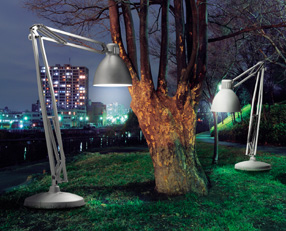
Here we are, that time of year again when we roll the clocks back and suddenly it’s dark early in the evening. Also a good time to think about our lighting and how it affects us.
Many of us living in the Pacific Northwest already understand the effect that our lack of sun and short winter days has on our health. The Circadian Rhythm (sometimes here in the PNW referred to as SAD or Seasonal Affective Disorder) impacts everything from sleep and mood to the health of our immune systems. Humans have only been living under artificial lights for less than 150 years, before that we rose with the sun and we spent our evenings by the light of the fire. While researchers continue a deeper understanding of the link between light and health, there are many things we can do to help lessen the affects.
First let’s review a bit about the human eye ~ the human eye possesses a set of non-vision photoreceptors that help regulate the circadian rhythm and production of important neurochemicals needed for good health. These photoreceptors are located in the lower back section of the eye to more efficiently collect blue-rich light from above; the sky.
For the average person exposure to a rich-blue light in the morning to early afternoon is recommended. Reducing the rich-blue light to a more red-rich light in the late afternoon and into the evening is advised. After 10:00pm total darkness is recommended or very low levels of red-rich light. Even an incandescent light if it is too bright can disrupt the circadian cycle. This cycle of light and dark can be challenging for those that work the night shift, research is also being done in this area.
Now for the kicker ~ turn off your electronic devices at night. Using your smart phone or reading with an electronic tablet can trigger health issues such as sleep disturbances or depression. If you suffer from some of these health issues, do your research on the light wavelengths of different light sources. Just because a lamp is 4100K does not mean it has the optimal amount of energy in the circadian-optimized spectra (the recommendation is near 460 nanometers). In fact, most “full spectrum” lights do not have circadian-optimized spectra.
Much research is being done into how lighting impacts health. From how lighting can make you find people more or less desirable, shrink your waistline or trigger depression to how it can potentially unlock the link between sleep disturbances and dementia, and fine-tuning drug therapies. It will be interesting to see the outcome of this research.
In the meantime ~ get outside and get some natural light! It is good for your health.
Information taken from an article in the LD&A, written by Scott Roos.
Photo courtesy of Juno Lighting Group
Complete List
 Outdoor Living IV Posted on July 13th, 2020
Outdoor Living IV Posted on July 13th, 2020
 Outdoor Living III Posted on May 29th, 2020
Outdoor Living III Posted on May 29th, 2020
 Some Light Gardening! Posted on April 29th, 2020
Some Light Gardening! Posted on April 29th, 2020
 Back By Popular Demand Posted on March 25th, 2020
Back By Popular Demand Posted on March 25th, 2020
 New website and a New Look Posted on September 20th, 2019
New website and a New Look Posted on September 20th, 2019
Categories
 New (number of posts: 3)
New (number of posts: 3) Tips (number of posts: 41)
Tips (number of posts: 41) Uncategorized (number of posts: 10)
Uncategorized (number of posts: 10)